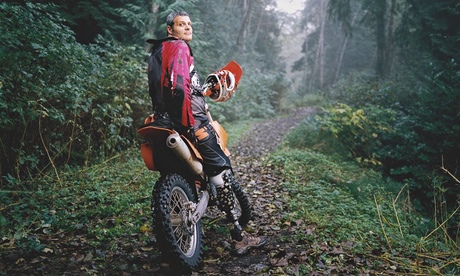
Outdoor activities are my passion: skiing, hiking and motor-biking are why I moved to Canada from Israel. That passion is also why I chose to amputate my right leg. It was badly damaged in 2010, in a near-fatal car accident. I was driving along British Columbia’s notorious Coquihalla Highway in a snow storm. I skidded on black ice, spun, and the car flipped on its roof and into the path of a lorry. Three days later, I woke from an induced coma: my right femur was shattered into 17 pieces and my ankle smashed. Three surgeons wanted to amputate the leg; a fourth argued I was still young and might recover.
The first six months back home were perpetual agony. Somehow my parents and girlfriend Sonja got me through. Above the knee, the leg began to heal, but the bone tissue lower down was dying. My foot deteriorated and the toes curled under, like a tiger’s claw. I couldn’t step on it and my calf muscle wasted away. I became depressed and realised I couldn’t be the dad I’d imagined for my daughters, then seven and three. I’d dreamed of skiing with them. Now that would never happen. Doctors suggested fixing the ankle at 90 degrees with screws. Eventually, the bone would collapse, but it could take 20 years. It would mean repeated surgery and medication. I couldn’t live like that.
My surgeon never spoke about an elective amputation, but after a year of researching options, I proposed it to him. He agreed. Friends and family didn’t understand and insisted I got a second opinion – they thought medicine might develop a magic cure – so I visited numerous specialists; one even said I was insane. But I knew it was the right decision. I had to wait a year and a half before I was fit for the operation. I spoke to amputees and posed in front of the mirror with my knee bent, so I could imagine how it would look. My personal trainer, an amputee ironman triathlete, lent me his prosthetic leg for one photo.
There were moments of doubt. Weeks before the operation, I felt better and began walking without crutches; one day I hiked for two hours. Maybe, I thought, I don’t need an amputation? But the next week I was in severe pain. The leg had to go. Telling my daughters was tough. To help them understand, we watched Dolphin Tale, a film about a dolphin that has its tail amputated. My little one was fine, but my eldest was devastated.
When the time came, I felt ready. After 18 months’ preparation, I joked that it was as if I had a PhD in amputation. There was a risk the leg wouldn’t heal after the operation. Lying in surgery, I had one final request: could I keep my leg? The hospital wanted to throw it away, which seemed disrespectful after 40 years together; I wanted it cremated.
When I woke and saw the stump, a wave of relief passed over me – this anchor dragging me down was gone. Life was beginning again. But my recovery wasn’t straightforward. The wound got infected and took four months to heal. Acute phantom pains shot into the void left by my foot. It felt like I was on fire or being stabbed.
Again, my family supported me. My daughters teased their one-legged dad and strapped teddies to my stump. They had a Barbie with a broken leg that they called Amputee Barbie. There were other funny moments: when Sonja collected the ashes from the crematorium, she took great pleasure in asking for the remains of her still-living partner.
When I finally got my prosthetic leg, I walked without crutches on the first day. The second day I rode a bike and the third I drove my car. It was painful, but everything seemed possible. Within six months, I skied with my girls, using a specially-adapted ski leg. Gliding down the slopes, I felt incredibly grateful and positive.
I proposed to Sonja and we married in August. I’m now training to be the first amputee to race the Dakar Rally on my motorbike in 2016. I’ve never regretted the amputation. Others may have found a sedentary job and lived happily with a damaged leg, but that’s just not me.
• As told to Gabriella Jóźwiak.
Do you have an experience to share? Email experience@theguardian.com

